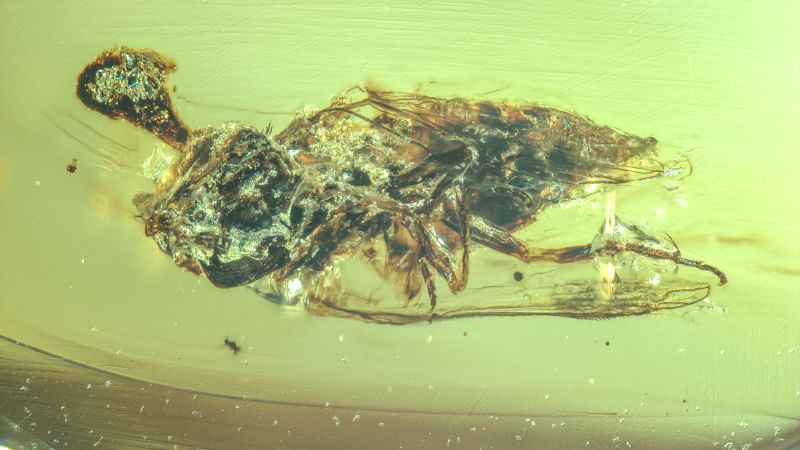
BEIJING – A groundbreaking discovery has emerged from the amber fields of Myanmar, capturing a prehistoric moment frozen in time. A 99 million-year-old piece of amber reveals an ancient fly with a mushroom-like fungus erupting from its head, reminiscent of the parasitic fungi seen in popular culture today.
Immediate Impact of the Fossil Discovery
The fossil, along with a second specimen of a young ant infected by a similar fungus, showcases one of the oldest known examples of parasitic fungi hijacking an insect host. This phenomenon, often dubbed “zombification,” highlights the complex ecological interactions that existed during the Cretaceous period.
Lead researcher Yuhui Zhuang, a doctoral student at Yunnan University’s Institute of Paleontology, emphasized the rarity of such finds. “Amber gives us this opportunity to visualize the ancient ecological relationships preserved in fossils,” Zhuang stated.
Key Details Emerge from the Study
Published in the journal Proceedings of the Royal Society B: Biological Sciences, the study identifies two new species of the genus Ophiocordyceps from the amber: Paleoophiocordyceps gerontoformicae and Paleoophiocordyceps ironomyiae. These species were discovered using advanced techniques such as optical microscopy and micro-computed tomography.
“The discovery of these two fossils suggests that terrestrial ecosystems were already very complex, and that Ophiocordyceps, in particular, may have begun to act as ‘predators’ of insects in the Cretaceous period,” Zhuang said.
Expert Analysis on Parasitic Fungi
Conrad Labandeira, a senior scientist at the Smithsonian Museum of Natural History, explained the process of zombification in ants, where the fungus manipulates the host’s behavior to facilitate its spread. “It appears that ants, for some reason, were targeted early for zombification,” Labandeira noted.
Study coauthor João Araújo from the Danish Natural History Museum added, “The species of fungus that infected the prehistoric ant may be an ancestor of zombie-ant fungi, and thus likely controlled its host’s body in similar ways.”
Background Context on Amber Fossils
The amber specimens, sourced from Myanmar’s markets, were acquired before 2017, avoiding the ethical concerns associated with the region’s ongoing conflicts. Despite the challenges, Myanmar’s amber fields have proven to be a treasure trove for paleontologists.
Phil Barden from the New Jersey Institute of Technology emphasized the significance of these finds. “Even as we find a remarkable diversity of organisms entombed in amber, it’s important to remember that we really do only capture the smallest glimpse,” Barden commented.
What Comes Next for Paleontological Research
This discovery not only sheds light on the ancient ecosystems but also opens new avenues for understanding the evolution of parasitic fungi. As researchers continue to explore these prehistoric interactions, the potential for new insights into the natural world remains vast.
Edmund Jarzembowski from London’s Natural History Museum finds the discovery fascinating, noting, “It was fascinating to see some of the strangeness of the natural world that we see today was also present at the height of the age of the dinosaurs.”
As the scientific community delves deeper into these findings, the implications for our understanding of ecological history grow richer, promising further revelations about life millions of years ago.







